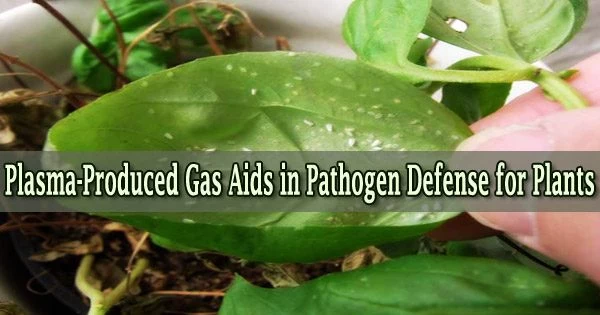Researchers have used plasma, a fourth state of matter found in the flash of lightning and the dance of auroras, to create a gas that may trigger plant immunity against contagious illnesses.
The research was presented on June 24 (2022) in PLOS One by the researchers from Tohoku University in Japan.
“Currently, chemical pesticides are the mainstay of disease control in agriculture, but they can contaminate the soil and harm the ecosystem,” said paper author Sugihiro Ando, associate professor in the Graduate School of Agricultural Science at Tohoku University.
“We need to develop plant disease control technologies that can help establish a sustainable agricultural system. The use of plant immunity is one of the most effective disease control methods because it utilizes the innate resistance of plants and has a low environmental impact.”
The researchers created dinitrogen pentoxide, a reactive nitrogen species (RNS), using their previously created apparatus that creates plasma from the air. This chemical shares characteristics with reactive oxygen species (ROS), including the ability to harm cells and set off particular stress reactions in living things.
“It is well known that reactive species are important signaling factors in the immune response of plants, but the specific physiological function of dinitrogen pentoxide is poorly understood,” Ando said.
“Plants produce reactive species as a defense response when they perceive an infectious stimulus from a pathogen. The generated reactive species function as signaling molecules that contribute to the activation of plant immunity.”
Ando claims that reactive species are connected to plant hormones that control plant immunity, such as salicylic acid, jasmonic acid, and ethylene, but that the physiological role of dinitrogen pentoxide is poorly understood.
Dinitrogen pentoxide gas can be used to activate plant immunity and control plant diseases. Through plasma technology, the gas can be produced from air and electricity, without special materials. The gas can also be converted to nitric acid, when dissolved in water, and used as a fertilizer for plants. This technology can contribute to the construction of a sustainable agricultural system as a clean technology with minimal environmental impact.
Sugihiro Ando
“Since reactive species are known to have important functions in plant immunity, we analyzed weather exposure of plants to dinitrogen pentoxide gas could enhance disease resistance,” Ando said.
Thale cress, a tiny plant frequently employed as a model organism for scientific research, was exposed to dinitrogen pentoxide gas for 20 seconds each day for three days by the researchers.
One of the three common plant pathogens a fungus, a bacterium, or a virus was then introduced to the plants. While the bacterium-infected plants had a similar rate of growth to the control plants, the fungus or virus-infected plants demonstrated inhibited advancement of the infection.
“These results suggest that the dinitrogen pentoxide gas exposure could control plant disease depending on the type of pathogen,” Ando said.
A genetic research showed that the gas selectively stimulated the ethylene and jasmonic acid signaling pathways, which Ando claimed may have contributed to the reported disease resistance. The gas also appeared to lead to the manufacture of antimicrobial compounds.
“Dinitrogen pentoxide gas can be used to activate plant immunity and control plant diseases,” Ando said. “Through plasma technology, the gas can be produced from air and electricity, without special materials. The gas can also be converted to nitric acid, when dissolved in water, and used as a fertilizer for plants. This technology can contribute to the construction of a sustainable agricultural system as a clean technology with minimal environmental impact.”
The researchers will then investigate how their technology functions with crops and in greenhouse farming.





